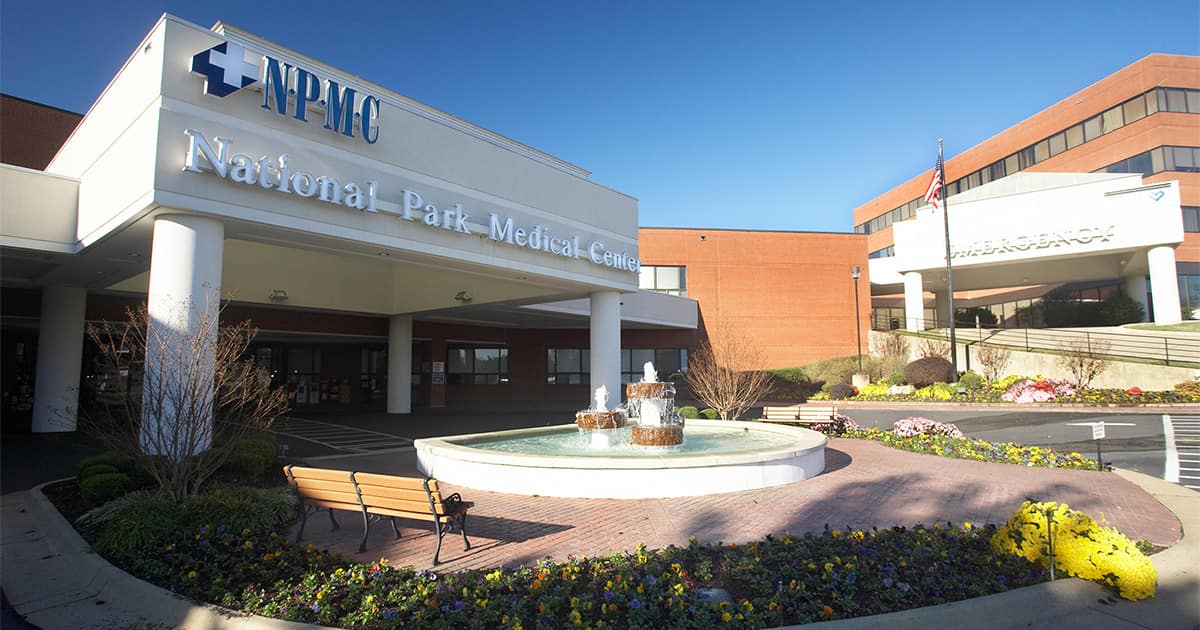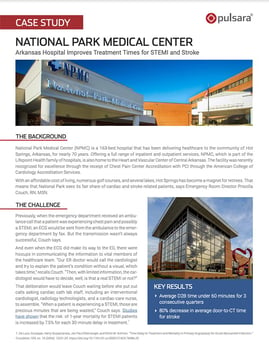Baker to Vegas: Leveraging Pulsara to Manage a Planned Event
Although they have the advantage of prior awareness and preparation, large-scale planned events pose unique challenges for emergency management...
2 min read
 Kinsie Clarkson
:
Feb 15, 2023
Kinsie Clarkson
:
Feb 15, 2023

Arkansas hospital achieves consistent <60 minute average door-to-balloon time for STEMI and 80% decrease in average door-to-CT time for stroke
National Park Medical Center (NPMC) is a 163-bed hospital that has been delivering healthcare to the community of Hot Springs, Arkansas, for nearly 70 years. Offering a full range of inpatient and outpatient services, NPMC, which is part of the Lifepoint Health family of hospitals, is also home to the Heart and Vascular Center of Central Arkansas. The facility was recently recognized for excellence through the receipt of Chest Pain Center Accreditation with PCI through the American College of Cardiology Accreditation Services.
Previously, when the emergency department received an ambulance call that a patient was experiencing chest pain and possibly a STEMI, an ECG would be sent from the ambulance to the emergency department by fax. But the transmission wasn’t always successful, according to Emergency Room Director Priscilla Couch, RN, MSN. And even when the ECG did make its way to the ED, there were hiccups in communicating the information to vital members of the healthcare team. “Our ER doctor would call the cardiologist and try to explain the patient’s condition without a visual, which takes time,” recalls Couch. “Then, with limited information, the cardiologist would have to decide, well, is that a real STEMI or not?” That deliberation would leave Couch waiting before she put out calls asking cardiac cath lab staff, including an interventional cardiologist, radiology technologists, and a cardiac-care nurse, to assemble. “When a patient is experiencing a STEMI, those are precious minutes that are being wasted,” Couch says.
In an effort to improve patient care, National Park Medical Center chose to adopt Pulsara, a mobile healthcare communication program that unites care teams on a single dedicated channel for each patient.
 The instant coordination of care Pulsara provides has helped decrease time-to-treatment for both STEMI and stroke patients at NPMC. The American Heart Association’s guidelines recommend a door-to-balloon time of 90 minutes for best patient outcomes. For the three most recent consecutive quarters, they achieved an average door-to-balloon time of under 60 minutes for STEMI patients. National guidelines call for a door-to-CT time within 25 minutes for suspected stroke patients. National Park Medical Center also decreased their average door-to-CT time for stroke patients from 30 minutes to less than 6 minutes — a remarkable 80% decrease.
The instant coordination of care Pulsara provides has helped decrease time-to-treatment for both STEMI and stroke patients at NPMC. The American Heart Association’s guidelines recommend a door-to-balloon time of 90 minutes for best patient outcomes. For the three most recent consecutive quarters, they achieved an average door-to-balloon time of under 60 minutes for STEMI patients. National guidelines call for a door-to-CT time within 25 minutes for suspected stroke patients. National Park Medical Center also decreased their average door-to-CT time for stroke patients from 30 minutes to less than 6 minutes — a remarkable 80% decrease.
Download the case study to learn how National Park Medical Center reimagined their communication with Pulsara and decreased time-to-treatment for their STEMI and stroke patients!
On Wednesday, February 15th, Eric Epley, Executive Director of the Southwest Texas Regional Advisory Council (STRAC), will identify what it takes to build a true system of care that scales. Register to attend the webinar here.

Although they have the advantage of prior awareness and preparation, large-scale planned events pose unique challenges for emergency management...

For Those Who Love a Good "Oopsie!" At Pulsara, we pride ourselves on enabling secure, HIPAA-compliant communication for healthcare teams. But let’s...

March Recap A New Integration: Improving Data Management, Streamlining Workflows, and Improving Care CoordinationOnly a few days ago, we announced...